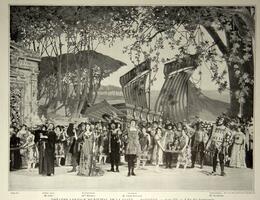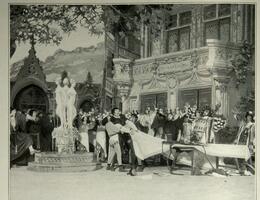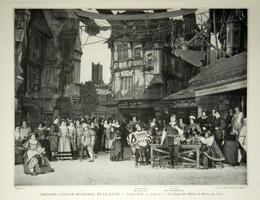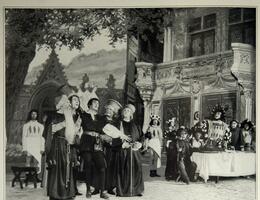Panurge
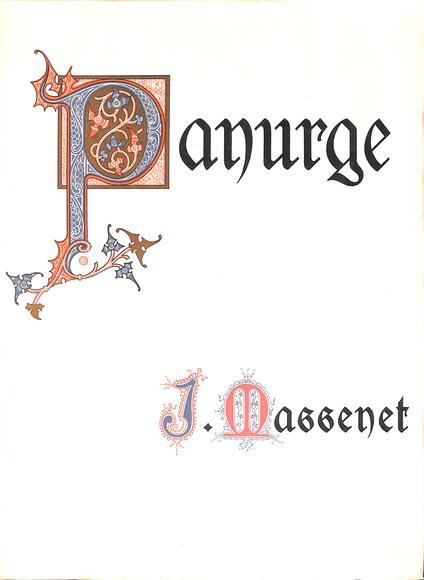
Haulte farce musicale in 3 acts premiered at the Théâtre Lyrique de la Gaîté (Paris) on 25 April 1913, after the composer’s death. After La Vie inestimable de Gargantua and Faits et dits héroïques du grand Pantagruel by François Rabelais.
Towards the end of his life, Massenet resolutely turned his hand to forms other than that of opéra comique, taking an interest in a range of subjects that were classical (Ariane, Bacchus, Roma), legendary (Amadis), heroic (Don Quichotte) and downright comic, with Panurge. One might imagine that, in the evening of his life, the composer was keen to follow the example of Verdi, who bid farewell to the stage with Falstaff. However, this is where the analogy ends. Taking his subject matter from Rabelais’ work, Massenet created a haulte farce musicale which was neither a comic opera nor a character comedy, being closer in spirit to the commedia dell’arte. The opera tells the story of the turbulent relationship between Panurge and his wife Colombe. Beaten by her husband, Colombe is left for dead. She pursues Panurge to bring him to heel and win him back through trickery. The librettists, Charles-Maurice Couÿba (a journalist and politician writing under the name of Maurice Boukay) and Georges Spitzmüller, dipped into this gargantuan literary source and reconstructed a series of situations that formed a clear, effective plot. Massenet gave his score even more structure and constructed some strong scenes, using situation motifs to unify recitatives and short arias. The composer used different forms of pastiche as a musical equivalent of the poem’s whimsical archaisms. The orchestration was understated and perfectly crafted to serve the dramatic elements, which were given even greater importance. Before his death, Massenet arranged with the Frères Isola to stage the premiere of Panurge at the Théâtre Lyrique de la Gaîté. Starring Lucy Arbell (Colombe) and Vanni-Marcoux (Panurge), the work was a great success, although it was censured by the critics for taking too many liberties with Rabelais.

